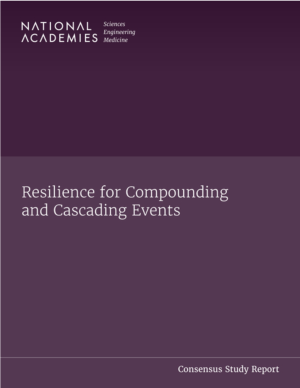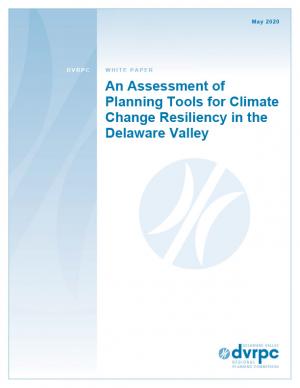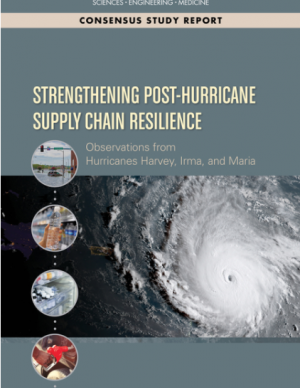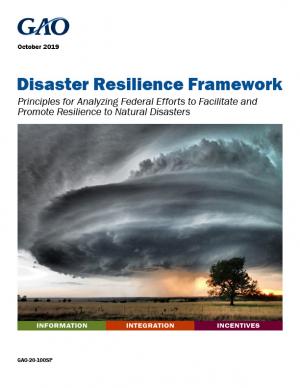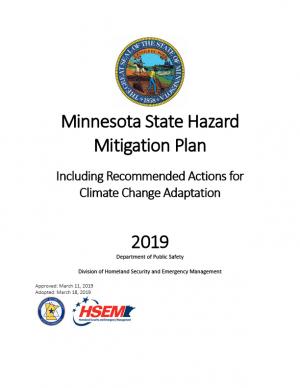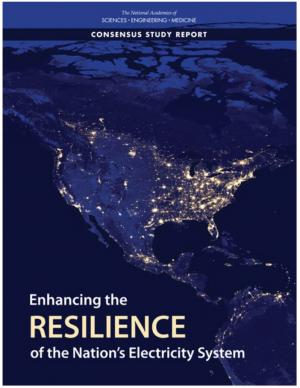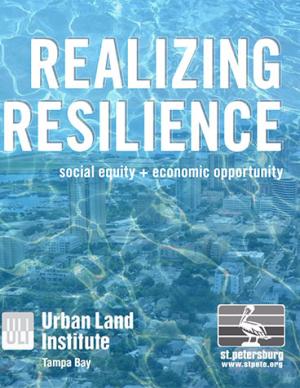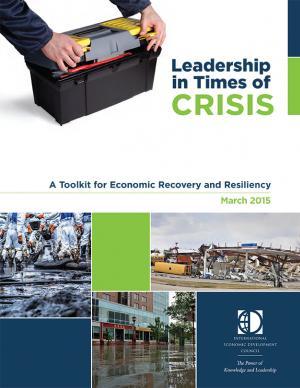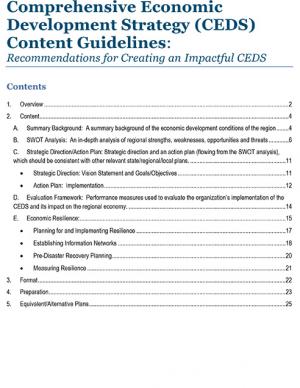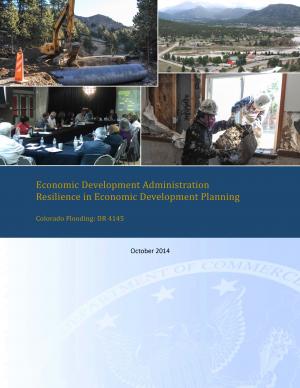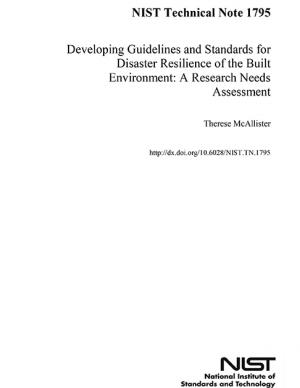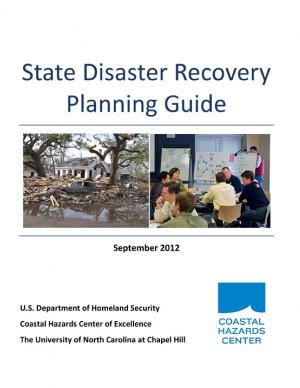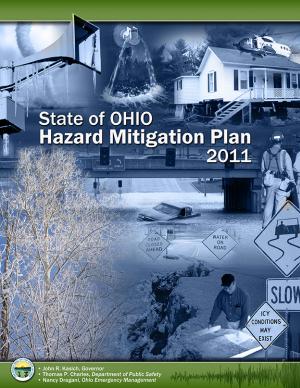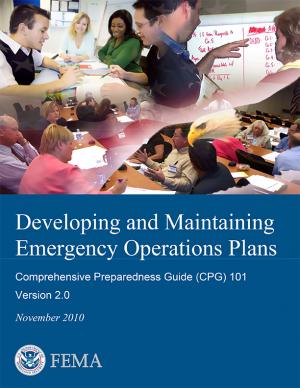Access a range of climate-related reports issued by government agencies and scientific organizations. Browse the reports listed below, or filter by scope, content, or focus in the boxes above. To expand your results, click the Clear Filters link.
There was a time not long ago when disasters would strike one at a time, and communities would have time to recover and rebuild. Today, however, there is a new normal where disasters most do not occur as isolated events and instead seem to pile on one another. They often unleash new devastation on a community before it has had a chance to recover from the prior disaster. This report, developed by National Academies' Resilient America Program's Committee on Hazard Mitigation and Resilience Applied Research Topics summarizes three applied research approaches in hazard mitigation and resilience field and provides four foundational themes to consider throughout research efforts.
The four foundational themes of future research identified include:
- compounding and cascading disasters are the new normal
- legacy conditions need to be assessed, evaluated, and addressed
- researchers need to practice codesign with communities, starting with pain points and impacts and working backward to solutions
- relentless resilience, or the ability to function throughout a series of disruptive events, is critical for a future marked by compounding and cascading events.
This is the second of two consensus study reports developed to assist FEMA in reducing the immense human and financial toll of disasters caused by natural hazards and other large-scale emergencies.
Click here to view a summary and key findings from this report >>
This report aims to build the capacity of organizations to serve as catalysts in supporting members of their communities stepping into leadership roles, as well as engaging them meaningfully in defining the scope of local climate change risks and impacts and formulating and implementing equitable solutions alongside key partners. This guide was developed using qualitative data collected through a series of interviews with experts from around the country who are designing, managing, and implementing community-based leadership development programs. Although not all of these programs directly address climate change and environmental justice, this collection of diverse programming illustrates the broad ways in which communities address leadership development and grassroots engagement in local decision making. This tool provides a comprehensive picture of training and capacity-building theory and practice, and showcases programs that are diverse in content, audience, geography, outcome, and practice.
Hotter weather, stronger typhoons, coral reef death, and physical and mental health risks are among the major challenges detailed in this report on climate change in the Commonwealth of the Northern Mariana Islands (CNMI). Threatened resources include high-value coastal infrastructure and the millions of dollars that ocean ecosystems add to the CNMI economy annually. This report provides guidance for decision makers seeking to better understand the implications of climate variability and change for CNMI and its communities and identifies the additional information and research needed to support responses that enhance resilience and help CNMI to withstand the changes to come.
Planning for climate change resiliency is an increasingly pressing requirement for communities throughout the world and the Delaware Valley Regional Planning Commission (DVRPC) region. In order to help local officials, non-profits, and communities with this process, numerous planning tools have been developed by a wide range of public and private agencies. Accordingly, the purpose of this paper is to explain, organize, and prioritize the tools that currently exist in order to select ones that are broadly accessible to a wide range of organizations, applicable across a range of sectors, and not overly redundant. During this selection process, a list of over 60 tools was winnowed down to a final toolkit of 18 that are particularly useful at any stage in the resiliency planning process and can be used for communities throughout the DVRPC region.
In the third quarter of 2017, Hurricanes Harvey, Irma and Maria revealed some significant vulnerabilities in the national and regional supply chains of Texas, Florida, the U.S. Virgin Islands, and Puerto Rico. Drawing on lessons learned during the 2017 hurricanes, this report explores future strategies to improve supply chain management in disaster situations. It makes recommendations to strengthen the roles of continuity planning, partnerships between civic leaders with small businesses, and infrastructure investment to ensure that essential supply chains will remain operational in the next major disaster. Focusing on the supply chains food, fuel, water, pharmaceutical, and medical supplies, the recommendations of this report will assist FEMA as well as state and local officials, private sector decision makers, civic leaders, and others who can help ensure that supply chains remain robust and resilient in the face of natural disasters.
The Disaster Resilience Framework serves as a guide for analysis of federal actions to facilitate and promote resilience to natural disasters. This report identifies the rising number of natural disasters and increasing reliance on federal assistance as a significant source of federal fiscal exposure. Disaster resilience helps to reduce the impact of climate-related events on people and property. Recognizing the gravity of the effect of these disasters on the American people and the fiscal exposure it creates, the framework was made to help those who have responsibility for oversight and management of federal efforts to consider what they might do that will result in federal and non-federal decision makers taking action to increase disaster resilience throughout the nation.
Communities in Hawai'i are highly vulnerable to natural disasters such as hurricanes, tsunamis, floods, seasonal high waves, earthquakes, volcanic eruptions, lava flows, and sea level rise. Since a changing climate is expected to worsen the effects of these natural hazards, planners and communities must work together to prepare for long term disastor recovery. The study developed statewide guidance documents and tools to improve community resilience to coastal hazards and sea level rise, thereby encouraging communities to focus on recovery practices before a disaster hits.
The Beloved Community is a vision for our future where all people share equally in the wealth and bounty of the earth, where we protect its abundance, diversity, and beauty for future generations. In this vision of liberation, racism, exploitation, and domination are replaced by democracy, cooperation, interdependence, and love. To get there, we pursue transformative, systems-change solutions. What do we mean by this? The root causes of the problems our communities face—like climate change, racism, and economic inequality—are all deeply connected. Since the problems are connected, so are the solutions. The purpose of this toolkit is to put us on the path toward achieving this vision. Through the context of building equity and resilience into climate adaptation planning, we introduce strategies to transform our communities and, by extension, society. Our ultimate goal is to create lasting and systemic change. At the same time, we recognize the urgency of the issues our communities face and the need to take action now. That is why we pursue change at every scale—from policy changes to community-based projects—to institute the transformative change we need to uphold our vision of the beloved community.
This plan represents the efforts of the State of Minnesota in fulfilling the responsibility for hazard mitigation planning. The purpose of this plan is to identify the state’s major hazards, assess the vulnerability to those hazards, and take steps to reduce vulnerability using the technical and program resources of Minnesota agencies. The process has included consideration of current and expected future impacts from Minnesota’s already changing climate, as relevant to hazard mitigation planning. The plan identifies goals and recommends actions and initiatives for the state government to adapt to, reduce, and/or prevent injury and damage from hazardous events.
This report offers the first national assessment of the scope and consequences of urban flooding in the United States. Researchers analyzed available data concerning urban flooding, surveyed municipal flood and stormwater managers, and met with professionals whose disciplines intersect with urban flooding at the local, state, and national level. The research team's findings affirm that urban flooding is a national and significant source of economic loss, social disruption, and housing inequality. This report presents the full results of the study, addresses governance issues that affect urban flood risk reduction, examines critical challenges, and offers recommendations for actions.
This report considers the economic, environmental, and social factors that contribute to resilience, and how the concept of resilience translates to the private sector, municipal decision makers, and communities. It summarizes key themes posed by the Urban Land Institute's resilience work in the years since Hurricane Sandy, with a particular focus on ULI’s resilience-focused Advisory Services work. Ten Principles was developed through a ULI member workshop in summer 2017, which included 15 ULI member leaders who had served on resilience-focused Advisory Services Panels and other Urban Resilience program activities over the past four years. The members attending the workshop formulated the ten principles, which are illustrated in the report with on-the-ground examples from Advisory Services panels.
This report focuses on identifying, developing, and implementing strategies to increase the power system’s resilience in the face of events that can cause large-area, long-duration outages: blackouts that extend over multiple service areas and last several days or longer. Resilience is not just about lessening the likelihood that these outages will occur; it is also about limiting the scope and impact of outages when they do occur, restoring power rapidly afterwards, and learning from these experiences to better deal with events in the future.
The Tampa Bay region is known as one of the most vulnerable in the world to wind damage, coastal flooding from storm surge, and rising sea levels. The City of St. Petersburg—with over 60 miles of coastal frontage—has already felt the impacts of storms. The adverse effects from these types of environmental events often impact low-income communities the hardest, as they have the most difficulty bouncing back from stresses and shocks. The City of St. Petersburg is committed to ensuring that investments in making the city resilient are equitable and create a range of opportunities that everyone can benefit from. The Urban Land Institute of Tampa Bay convened top experts in climate resilience from New Orleans, Miami, Boston, and the Tampa Bay region to provide technical assistance to the city on creating an equitable culture of resilience. A grant from the ULI Foundation and Kresge Foundation funded this effort.
This guidebook results from the culmination of a year of dialogue among diverse stakeholders in southeastern Connecticut who defined challenges and solutions from extreme weather, climate change, and shifting social and economic conditions. Participants included representatives from nine municipalities, public and private utilities, public health departments, chambers of commerce, major employers, conservation organizations, academic institutions, community non-profits, and state agencies, among others. The dialogue captured six themed planning sectors (water, food, ecosystem services, transportation, energy, and regional economy) in a process that used surface and integrated solutions to address singular and multiple challenges across planning sectors. The guidebook provides a quick reference resource to help shape and inform actions that will advance a regional resilience framework for southeastern Connecticut; an accompanying Summary of Findings captures the project's final outcomes and conclusions, as well as providing a comprehensive account of the objectives, process, and details.
This guide offers a collection of 19 practical strategies for building owners to make their properties more resilient against the effects of extreme weather events. It draws on advice from over 50 experts in the field of resilience as well as the Federal Emergency Management Agency (FEMA) and the National Flood Insurance Program (NFIP). In addition, the manual offers guidance on determining a property’s vulnerability to various hazards, finding which strategies are relevant to a particular building, and getting started with a resilience plan.
This report—the first phase of the Department of the Interior (DOI) assessment effort for Hurricane Sandy projects—was developed for DOI by a metrics expert group of physical and ecological scientists and socioeconomic experts who recommended performance metrics for measuring changes in resilience resulting from the DOI-sponsored projects. It identifies natural and artificial coastal features most affected by Hurricane Sandy along the Northeast coast—such as marshes, beaches, and estuaries—and recommended metrics that would indicate resilience change in those features.
The Toolkit—a downloadable PDF—is designed to benefit a wide range of public- and private-sector officials working with businesses and industries in the economic recovery process. It provides strategies and tactics for community leaders to focus on for economic recovery and preserving jobs, incorporating useful information for convening private and public stakeholders to identify key economic recovery strategies, tips on how to navigate federal resources for response and recovery, and implementation of recovery initiatives. The Toolkit was developed by the International Economic Development Council with nationwide input and funded in part by grants from the U.S. Commerce Department’s Economic Development Administration.
It is becoming increasingly apparent that regional economic prosperity is linked to an area’s ability to prevent, withstand, and quickly recover from major disruptions (i.e., "shocks") to its economic base. Many definitions of economic resilience limit its focus on the ability to quickly recover from a disruption. However, in the context of economic development, economic resilience becomes inclusive of three primary attributes: the ability to recover quickly from a shock, the ability to withstand a shock, and the ability to avoid the shock altogether. Establishing economic resilience in a local or regional economy requires the ability to anticipate risk, evaluate how that risk can impact key economic assets, and build a responsive capacity. Building economic resilience is highlighted in this guide from the U.S. Economic Development Administration. The guide is primarily intended to assist in efforts to develop the content of a CEDS document, suggesting how to develop the document’s format and substance to make the strongest, most useful, and most effective CEDS possible.
Colorado experienced extensive flooding and landslides in September 2013. During the recovery effort, several important economic recovery issues emerged—among them was a desire to learn from the disaster and integrate resilience into the economic sector. To that end, the Economic Development Administration conducted a study to establish a baseline of current economic resilience planning efforts in the area, identify trends and current resiliency practices, and develop recommendations to assist communities, state and regional economic development organizations, and federal agencies in stimulating resilience planning. This document provides an overview of resilience in the context of economic development and its application to a tool for evaluating resilience in economic development plans.
This report outlines 100 recommendations to help improve federal programs and their ability to prepare for climate change, drawing from a series of workshops with leading federal, state, and local officials and building upon lessons learned post-disaster in New Orleans (following Hurricane Katrina), New York (following Hurricane Sandy), and Vermont (after Hurricane Irene). The report identifies more than 30 federal programs, initiatives, and laws that can be used to prepare for extreme events such as storms, floods, and heat waves as well as rising seas. This report informed the White House's State, Local, and Tribal Leaders Task Force on Climate Preparedness and Resilience.
PlaNYC is a long-term sustainability plan based on the latest climate science. This report includes ideas on how to rebuild the communities in New York City affected by Hurricane Sandy in 2012 and how to increase resilience and infrastructure of buildings city-wide in order to protect against future extreme events.
Two national workshops were convened in 2011 to assist the National Institute of Standards and Technology (NIST) with identifying critical gaps and needs in tools and metrics for assessing the resilience of the built environment. The Resilience Roundtable convened invited leaders from engineering practice and research communities and the standards development community to identify gaps in current practice, standards, and codes and the assessment and design of resilient buildings and infrastructure systems. This report—NIST Technical Note 1795—presents the technical gaps and research needs for developing standards on community resilience planning, metrics, and tools for assessing facility and community resilience.
This document was written for those tasked with the development, maintenance, and implementation of a state disaster recovery plan, and is intended to serve as an evaluative guidebook from which users can draw from widely accepted steps derived from planning processes and informative best practices adopted in other states. The guide can be used to assess where a state plan stacks up relative to emerging federal planning standards.
No person or place is immune from disasters or disaster-related losses. Infectious disease outbreaks, acts of terrorism, social unrest, or financial disasters in addition to natural hazards can all lead to large-scale consequences for the nation and its communities. Communities and the nation thus face difficult fiscal, social, cultural, and environmental choices about the best ways to ensure basic security and quality of life against hazards, deliberate attacks, and disasters. Beyond the unquantifiable costs of injury and loss of life from disasters, statistics for 2011 alone indicate economic damages from natural disasters in the United States exceeded $55 billion, with 14 events costing more than a billion dollars in damages each.
One way to reduce the impacts of disasters on the nation and its communities is to invest in enhancing resilience--the ability to prepare and plan for, absorb, recover from and more successfully adapt to adverse events. Disaster Resilience: A National Imperative addresses the broad issue of increasing the nation's resilience to disasters. This book defines "national resilience", describes the state of knowledge about resilience to hazards and disasters, and frames the main issues related to increasing resilience in the United States. It also provide goals, baseline conditions, or performance metrics for national resilience and outlines additional information, data, gaps, and/or obstacles that need to be addressed to increase the nation's resilience to disasters. Additionally, the book's authoring committee makes recommendations about the necessary approaches to elevate national resilience to disasters in the United States.
Enhanced resilience allows better anticipation of disasters and better planning to reduce disaster losses-rather than waiting for an event to occur and paying for it afterward. Disaster Resilience confronts the topic of how to increase the nation's resilience to disasters through a vision of the characteristics of a resilient nation in the year 2030. Increasing disaster resilience is an imperative that requires the collective will of the nation and its communities. Although disasters will continue to occur, actions that move the nation from reactive approaches to disasters to a proactive stance where communities actively engage in enhancing resilience will reduce many of the broad societal and economic burdens that disasters can cause
This Technical Input to the Third National Climate Assessment examines vulnerabilities of infrastructures and urban systems to extreme weather and other events associated with climate change.
This plan identifies Ohio's mitigation strategy, which helps guide local mitigation planning and project efforts. The State of Ohio Standard Hazard Mitigation Plan was first approved by FEMA in 2005. This 2011 plan revision details Ohio’s highest priority hazards: river/stream flooding, tornadoes, winter storms, landslides, dam/levee failure, wildfire, coastal flooding, earthquakes, coastal erosion, drought, severe summer storms, invasive species, and land subsidence hazards. The plan also integrates and introduces the State Hazard Analysis, Resource and Planning Portal (SHARPP), a web-based system that captures and disseminates state and local hazard mitigation planning and project information.
This report—known as the Comprehensive Preparedness Guide (or CPG) 101—is designed to help both novice and experienced planners navigate the planning process for emergency operations. Used in its entirety, the guide provides information and instruction on the fundamentals of planning and their application. A detailed planning checklist is provided.

